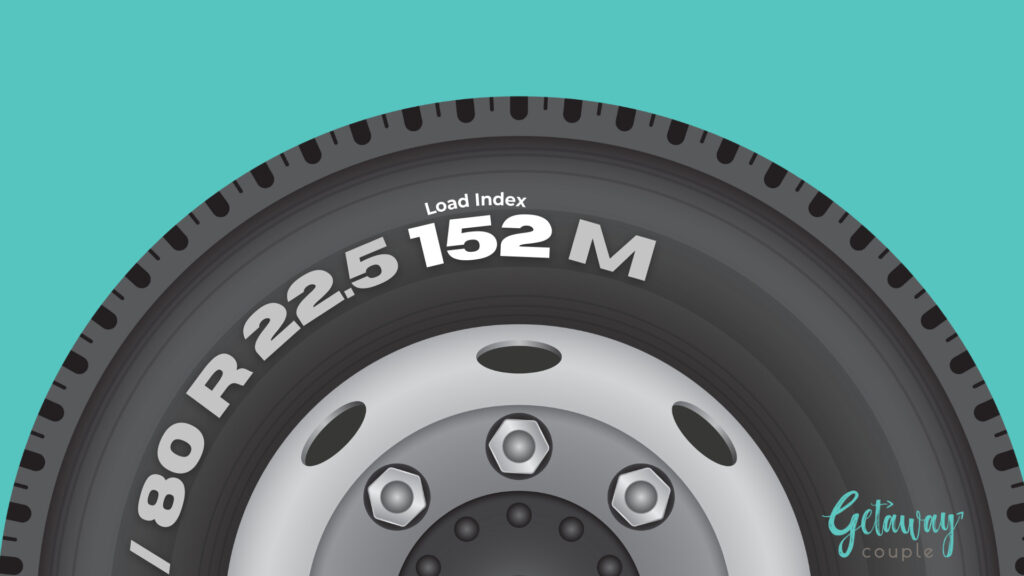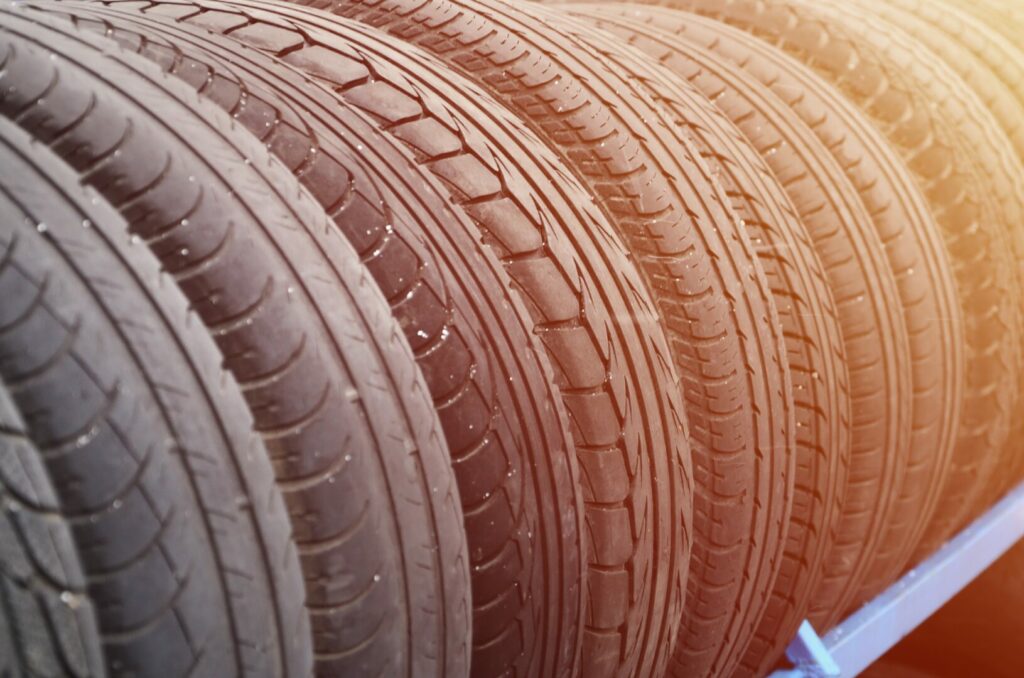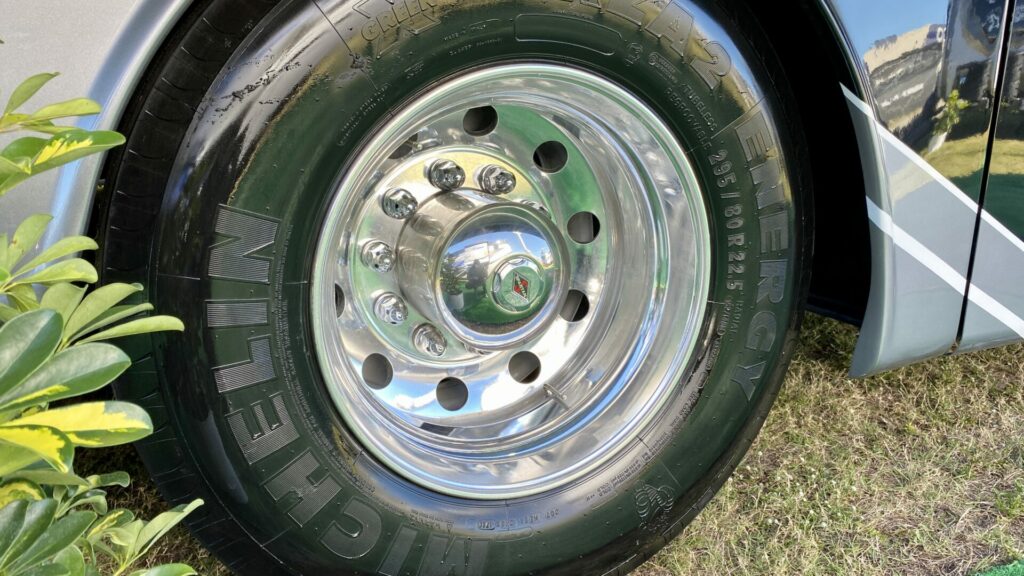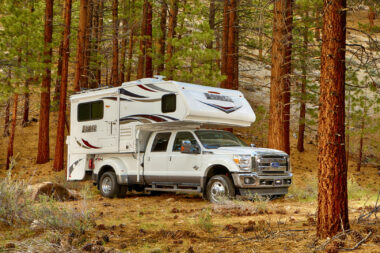Table of Contents Show
It doesn’t matter if you’re in a towable or driveable RV. Driving too fast in your RV can be extremely dangerous. You can create a very dicey situation for yourself by not following the tire speed rating on your RV’s tires. We want you to arrive safely at your next campsite and have a smooth RVing experience.
That’s why we’re helping you understand RV tire speed ratings before your next big adventure. Let’s get started!
What Is a Tire Speed Rating?
A tire speed rating is the maximum speed tires can safely travel for optimum performance and life expectancy. Exceeding this speed can cause increased wear and tear on the tires. As the tires exceed the speed rating, there’s more friction between them and the road. This friction generates heat and increases the temperature of the tires.
Exceeding the rating for a minute or two isn’t likely to create a problem. However, if you’re frequently taking extended travel days and exceeding the rating for your tires, you’re gambling. Tire failures can cause massive amounts of costly damage to your precious trailer.
How Do You Read the Speed Rating on a Trailer Tire?
A tire has a mixture of letters and numbers that make up the tire’s code. It can look like a foreign language, but it’s pretty easy to learn if you know what you’re looking at. This long code that typically ends with a letter is the speed rating.
Because tire speed ratings are universal, you can reference a tire speed rating chart like the one below to see your tire’s specific rating. Checking the speed rating only takes a minute or two and can help you avoid making a costly mistake.
Tire Speed Rating Chart
| Speed Rating | Maximum Speed |
|---|---|
| B | Up to 31 mph |
| C | Up to 37 mph |
| D | Up to 40 mph |
| E | Up to 43 mph |
| F | Up to 50 mph |
| G | Up to 56 mph |
| J | Up to 62 mph |
| K | Up to 68 mph |
| L | Up to 75 mph |
| M | Up to 81 mph |
| N | Up to 87 mph |
| P | Up to 93 mph |
| Q | Up to 100 mph |
| R | Up to 106 mph |
| S | Up to 112 mph |
| T | Up to 118 mph |
| U | Up to 124 mph |
| H* | Up to 130 mph |
| V | Up to 149 mph |
| W | Up to 168 mph |
| Y | Up to 186 mph |
| Z | 149 mph and over |
Where Is Tire Speed Rating Located?
Tire speed ratings are on the sidewall of a tire. You’ll see a combination of letters and numbers that makes up the tire’s unique code. The code tells you all the specifications for that specific tire.
By reading this code, you can know the type of tire, its tread width, load rating, and its speed rating. The manufacturer of your tires will likely have charts that can help you decipher the code so you can stay safe while on the road.
You can typically also find the recommended speed rating for your tires in your vehicle’s owner’s manual, on a sticker on the inside of your door jam, on the glove box door, or possibly even the gas tank hatch.
All manufacturers are different, so make sure you check where your specific manufacturer has placed this critical information.

How Fast Can You Drive on RV Tires?
RV tires are completely different tires than standard passenger vehicle tires. This is often because RV tires must handle more weight than passenger tires. Most RV tires have speed ratings that fall between 55 mph and 75 mph. However, some have ratings of over 80 mph.
It’s important to remember that just because you have tires capable of handling excessive speeds doesn’t mean you should speed. RVs are large vehicles that require a tremendous amount of stopping distance.
The faster you’re going, the more stopping distance you’ll need. As a result, many RVers set the cruise control no higher than 65 mph. Not only do they extend the life of their tires and stay safe, but they also typically get better fuel economy.
Pro Tip: Want to increase the life of your RV tires? Learn how to set them to the right tire pressure before you hit the road.
What Is Load Index Rating on RV Tires?
While you’re looking at the tire code on your tire, you’ll likely see a two or three-digit number listed right before the speed rating. This number is the load index rating, another significant number for your trailer.
The load index tells you how much weight the individual tire can hold. On RV tires, the load rating may be expressed as a letter.
Your RV’s tires play a key role in carrying the weight of your RV. So when you pack it full of your supplies and carry water in any of the tanks, it’s adding weight to your tires. Excessive weight on your tires can increase the friction between them and the road, increasing wear and tear and causing a tire blowout.

How Do I Know What RV Tire Speed Rating I Need?
It’s not that speed rating isn’t essential, but it’s one of the last items you’ll likely consider when buying tires. That’s because most trailer tires have a speed rating of over 65 mph, which is a sufficient speed when towing. Tires designed for handling an RV’s weight and load will typically safely handle highway speeds.
You want a tire with at least a K-speed rating in the alphabetical rating system. Tires with a K-speed rating can handle speeds up to 65 mph with a low risk of issues under typical driving circumstances. Whichever rating your tires have, always check their pressure before hitting the road!
Pro Tip: Finding a gas station tire compressor can be a pain in your RV. We recommend always carrying a portable tire compressor with you.
Can I Mix Tires With Different Ratings?
You want to avoid using tires with different speed ratings. However, if you have to do it, it’s possible to do it as a temporary fix until you get the correct tire. Tires with different ratings can perform and feel differently. This is because tires are all created with other characteristics to get optimal results for the driver.
If you find yourself having to use tires with different speed ratings, you’ll want to follow the lowest-rated tire on your vehicle. This will help you avoid increasing the wear and tear on that tire.

What Happens if You Go Faster Than Tire Speed Rating?
It’s very unlikely that anything will happen if you exceed the speed rating for a brief time. If it does, it’s likely completely coincidental, or the tires were already in poor condition. However, going faster than a tire’s rating will cause increased wear and tear on the tire. Repetitive abuse of your tires will likely lead to replacing them more often or experiencing a tire failure.
Tire failures, when it comes to RVs, are no picnic. They can do a tremendous amount of damage to your RV and your bank account. We strongly suggest that you avoid going over 65 mph no matter the ratings on your specific tires.
Does Tire Speed Rating Affect Ride Quality?
Tires with higher ratings provide more grip and stopping power, which are major concerns for most drivers. Having more grip means being able to handle corners better without losing control.
The faster you’re driving, the more dependent you will be on traction and grip to avoid losing control of your vehicle. If your tires have a low rating, the key is to keep the speeds down to avoid losing grip.
Pro Tip: You should always have the best tires that you can afford. Learn how to choose the best trailer tires before your next road trip.

Know Before You Go
Before hitting the road in your RV, you want to know the rating for your tires. You don’t want to wait until you’re stuck on the side of the road to discover that you were driving too fast.
It’s also a good idea to use a scale to weigh your RV. That ensures you’re under the load rating for your tires before embarking on a long trip. If you take care of your tires, they’ll stand a better chance at taking care of you while you’re on the road!
Do you know your tires’ rating?






